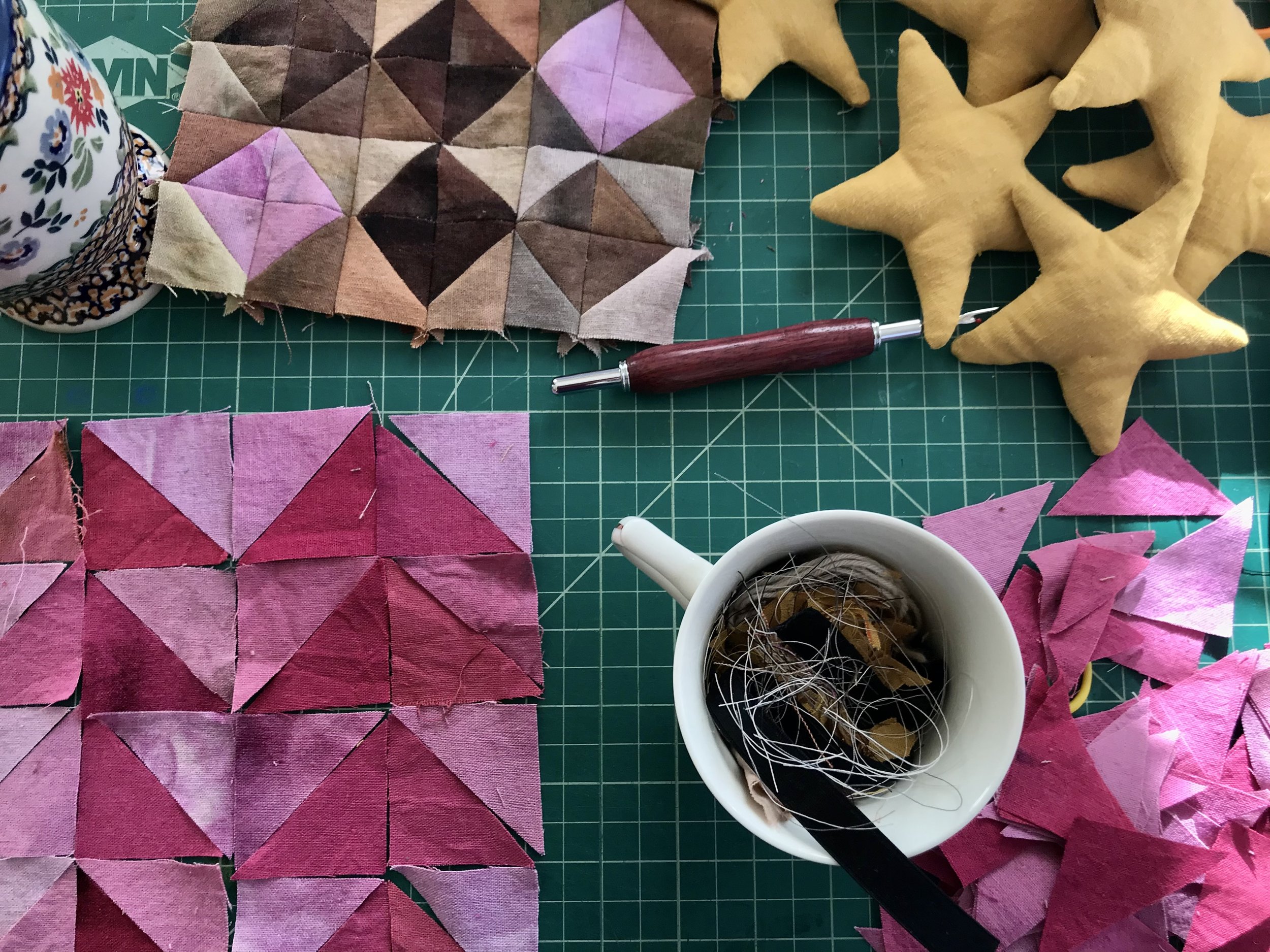the artist
Zoë Barbano Grinder(she/her) is a maker and mender based in Providence, RI.
Born in New York, Zoë grew up in southern Connecticut, learning to sew with her mother. As a teenager, she sewed most of her own clothes from lack of access to plus size clothing. This fundamentally shaped her relationship to sewing as a means of access. Clothes are formed for and around bodies.
She graduated with a BFA in Fibers from the Massachusetts College of Art and Design. In her time there, she focused on the history of color theory and heading the campus Restore. The Restore was and still is a “free store” that collects used art supplies and material for redistribution to students and the general public.
After graduation, Zoë moved to Rhode Island on a whim where she continues to sew personally and professionally from her studio in the Valley Arts District. Often she sets up at markets for “on demand mending.” While not sewing, Zoë is a nanny, baker, and avid dreamer.
To see the artist’s complete CV, please click here.
the practice
Zoë Barbano Grinder (ZBG) is a practice dedicated to making lovely space - the home, the body, the familial dinner party. ZBG calls itself a practice, because at its core, it exists to show up everyday, be gentle, and live life as well as possible. While its creator came from a familiar, “my mother sewed” and “my grandmother crocheted” route, the practice only became what it is from a need to be at peace with one’s own body and home.
ZBG makes pillows, quilts, tote bags, festive bunting, clothing, etc from dead stock and thrifted vintage fabrics. There is joy in finding something old and lovely and turning it into something new.
The artist often is found at markets performing “on demand mending.” This project challenges the artist to create patches that both secure the ripped garment and also add to its complexity. Mends are visible because people change as they grow older and so should clothes.
The work is inspired by the history of color theory. The artist considers every piece big or small to be a color study (the object) within a color study (the greater world). Complimentary colors are conversations. Monochromatics and rumminations Every color theory has come from some greater cultural, social, or historical movement. Sir Issac Newton added the color “indigo” for the booming indigo trade of his time, while Johann Wolfgang von Goethe, the romantic poet, believed purple to be a vain and unnecessary color. If all of history has been changing the rules, cannot the future too?



